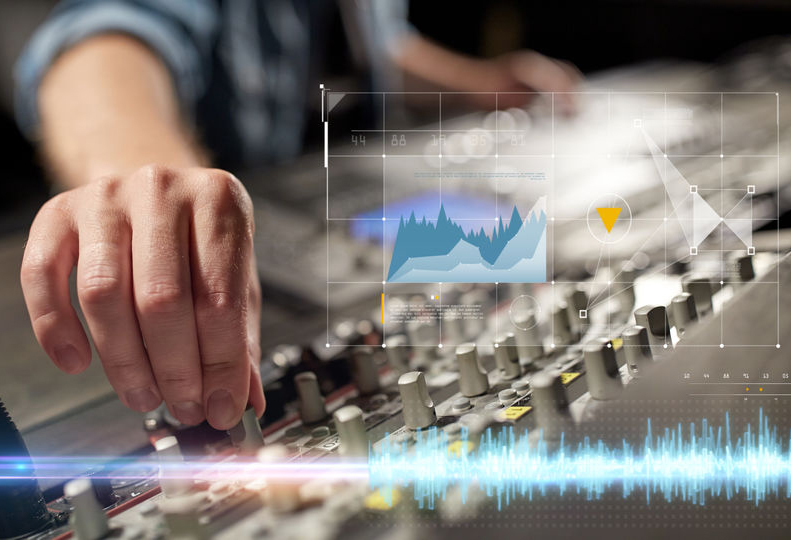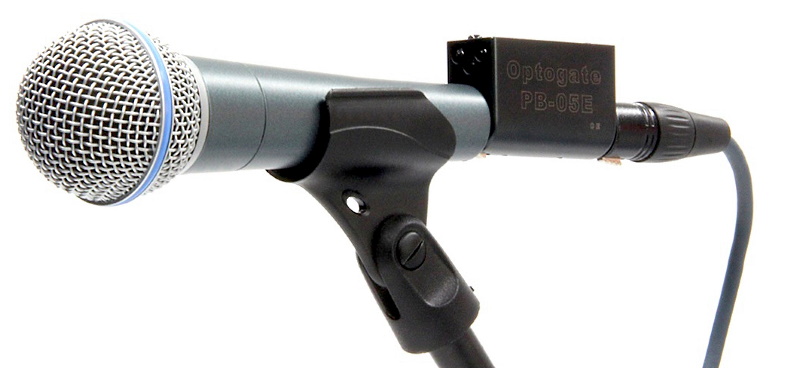
Craig Leerman: I do a lot of corporate meetings where every presenter needs to be heard, but many of these folks are amateur presenters with horrible mic technique. They may excel in their fields but have no clue how to speak correctly into a podium mic – they don’t keep their mouths in front of the mic, or they get real close and are too loud. One trick I’ve been using for years is to insert a Symetrix 422 AGC/leveler on the podium mic channel.
Another rack-mount processor I can’t live without at corporates is a dbx AFS2 feedback suppression processor. It is equipped with 24 filters per channel at up to 1/80 of an octave. While I mostly use the device to help my old ears “ring out the room” during setup, you can even set some filters to “listen” during the presentation and squash any feedback that rears its ugly head live during the show.
My corporate freelance rack also contains a few 30-band EQs (useful for various loudspeaker fills and stage monitors for performers at corporate gigs), along with a Yamaha SPX 900 multieffects processor, handy when the promoter has booked a singer or performer at a corporate event but the A/V company has only provided an analog console with no effects. The last gig I used it on was a few months ago where I was provided a nice 16 input analog console, and there was a person singing the National Anthem before the meeting. There was also a small jazzy trio comprised of company employees that performed during meeting breaks. It’s always nice to be able to give a singer a little reverb, and one of my EQs was pressed into service for the trio’s monitors – some powered loudspeakers “borrowed” from a breakout room that was empty during my session.
Michael Reed: The one thing off the top of my head that I learned is that a filter in a DSP, be it Linkwitz-Riley (L-W) or Butterworth at whatever order, does not necessarily do what it is labeled to do. In other words, an L-R 2nd-order at 90 Hz, may not change 90 Hz to 6 dB down exactly. It’s important to use an analyzer and verify that what’s described is actually happening, and preferably not on a job site. Make notes on what processors do in the shop, which will then help speed up your workflow and inspire more confidence when you’re on site.
Nicholas Radina: When mixing in-ear monitors (IEMs), the struggle is often reducing bleed and/or the perception of bleed. This unwanted “wash” can make the IEM experience disappointing. With singers, it’s most prevalent with their own mic, which is often pointed straight at the drummer. Other open mics compound the issue. With so much bleed in the crucial intelligibility frequency range, the ear starts to become less sensitive and fatigued.
There are some novel hardware solutions to this like IR mic mutes or using a pressure-sensitive mat placed at the standing position of a singer that keys a well-adjusted audio gate. Yet I’ve found that the gate route can sometimes be very unnatural to singers (although I experiment with a full-range, low-ratio gate). There are some novel plugins that approach this issue as well from Waves and Yamaha.

However, I tend to keep it simple with the tools I have at the desk. One of these tools in the Midas universe is the emulation of the BSS DPR901 dynamic EQ – think of it as a frequency-selective compressor. Inserted on the vocal channels, with a wide Q around 2 kHz, I adjust the threshold to always be reducing that frequency content unless the singer is right on the mic. (Tip: The 901 can function as a 1 x 4, 2 x 2 or 4 x 4 within one rack unit – I’ve used all four “bands” of a single rack unit on four vocals.) I’m often pleasantly surprised with how well this cleans up that crucial intelligibility range, providing the artist with more clarity and less ear fatigue.
Ryan O John: There always seems to be a flavor of the month for me, I’m excited by some new processor and then a few months later it’s something else that’s got me excited. Ultimately it’s because something that seemed like a new idea or process is no longer new, it’s just “normal at that point.”
My current “flavor” is related to the new Sonnox dynamic EQ plugin. What makes it special is that each band can individually set to stereo left/right or mid/side, and each frequency band of the EQ can be triggered by any selected frequency, not just the band it’s set to compress or expand. That becomes epically useful when trying to make space for a vocal in a busy mix.
Most midrange elements in my mixes either have a dynamic EQ inserted on them or they’re routed through a group with one, all of which are sidechained from the lead vocal. Each is set up with two bands set to mid/side in the 2.5 kHz and 400 Hz range, triggered from the sidechain input (which is the post-fader vocal in this case), and they’re both triggered from a pretty wide key around 700 Hz, which always seems to be present in my vocal even if the singing is quiet.
Any time my singer is singing, a touch of 2.5 kHz and 400 Hz is pulled out of the mid-only of any elements that may compete for the space. In effect, this leaves space for the vocal but there’s never emptiness in the mix when the vocal isn’t going. Also, even when the singer isn’t pushing out a lot of 2.5 kHz, the range is cut from offending instruments and thus makes the tiny bit of 2.5 in the vocal seem clearer. Further, if I push the vocal louder, it cuts more from the competing instruments since it’s a post-fader sidechain.
Where it gets even more interesting is the way events are set up in my desk. I have it set up so the sidechain source actually changes depending on what instrument is considered the solo instrument. It can turn the guitar into the source of the sidechain for these dynamic EQs (and bypass the dynamic EQ on the guitar) if the guitar fader is above +3 dB – same for all other instruments that take solos. This means space is made for whatever “lead instrument” fader is pushed up above +3 dB, and space is always made for the lead vocal.
